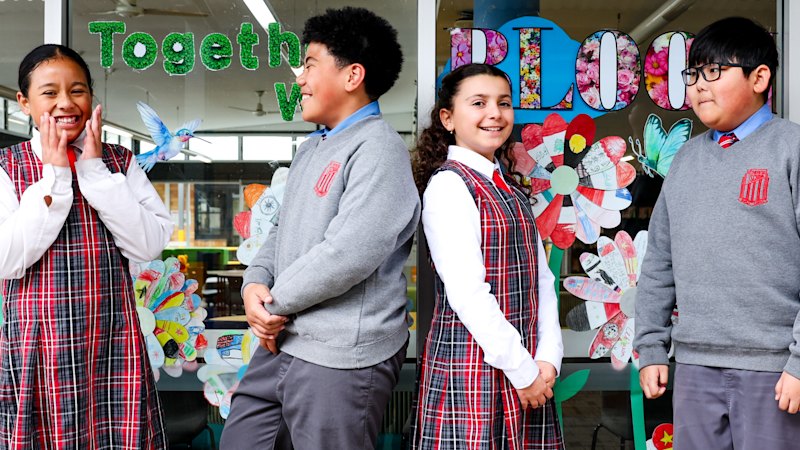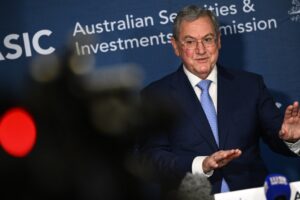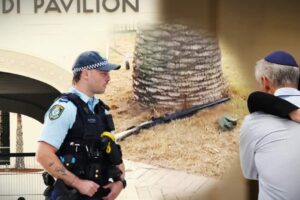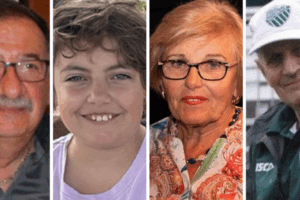
High school students whose parents hold a university qualification were about 10 times as likely to achieve in the top “exceeding” band than those whose parents did not finish year 12.
In year 3 reading, just 3.8 per cent of children whose parents are university educated are in the “needs additional support” band, compared with 30 per cent of those students whose parents didn’t complete year 12.
The results of tests sat by more than 1.3 million children in years 3,5,7 and 9 around the nation in March reveal about one-third of the students scored in the “needs additional support” or “developing” bands, while the remainder scored in “strong” or “exceeding”. About 390,000 students in NSW took the tests this year, and had results graded for the third year across the four bands.
The Australian Curriculum, Assessment and Reporting Authority, which administers the tests, said performance is “broadly stable” at a national level, while participation rates across all years and domains have rebounded to pre-pandemic levels, reaching 93.8 per cent – the highest level since 2017.
Jordana Hunter, education program director at the Grattan Institute, said Australia “should not settle for one in three children falling short of proficiency, or becoming comfortable with mediocre performance.”
“It’s critical for parents to understand that if their child is in the ‘developing’ band they are still likely to need additional support in class to get back on track,” Hunter said.
Loading
She said the key to lifting more children above the NAPLAN proficiency level was the ongoing training of their teachers.
“It comes down to investing in a much more strategic way in professional expertise for teachers, particularly in the primary school years. We should be doing more to lift the professional expertise of our primary teachers when it comes to mathematics, reading and writing.”
At St Therese Catholic Primary School in western Sydney, principal David Hurley said his students recorded a 13 per cent average increase in results from year 3 to year 5.
The school is above the state average in writing, spelling and grammar, with 98 per cent of year 5 students in “strong” or “exceeding” bands, compared with the state average of 68 per cent.
In spelling and grammar, more than 80 per cent of year 5 students at St Therese are in the top two bands.
Hurley said teachers use “high-impact explicit instruction”, making sure all students have opportunities to practise skills with support of their teacher.
Year 5 students at St Therese Catholic Primary School have recorded consistent improvement from 2023 to 2025 in NAPLAN results.Credit: Edwina Pickles
“Classes always begin with a short review of what we’ve learnt before, and we introduce new information in small steps,” Hurley said. “Teachers are constantly asking questions to check for understanding and, in writing, use plenty of worked examples. There is a lot of joint construction where a teacher and students are constructing sentences and paragraphs together.”
Federal education minister Jason Clare said the NAPLAN results showed encouraging signs of improvement in numeracy and literacy.
“While overall results are broadly stable, with two thirds of students achieving at the ‘strong’ or ‘exceeding’ proficiency level, numeracy results improved across years 5, 7 and 9. This is the first time this has happened across all these cohorts since 2017,” he said.
“The improvements in literacy and numeracy are good news, but there’s more work to do.
“That’s what the new [funding] agreements we’ve now signed with every state and territory are all about. They’re the biggest investment by the Australian government in public schools ever. This funding is tied to real and practical reforms,” Clare said.
Glenn Fahey, program director in education policy at The Centre for Independent Studies, said the results show Australia’s education system is “stalled in a state of high-spend stagnation”, with static performance, persistent gaps and outcomes that “fail to reflect the scale of public investment”.
Loading
“Despite encouraging glimpses, the overwhelming evidence is of an education system stuck in neutral – when it needs to be revving up,” he said.
“Per student, public funding has effectively doubled since 2008 – now over $21,000 per student – with around $90 billion in total public funding for schools this year. But student achievement has not kept pace with investment,” Fahey said.
Start the day with a summary of the day’s most important and interesting stories, analysis and insights. Sign up for our Morning Edition newsletter.





